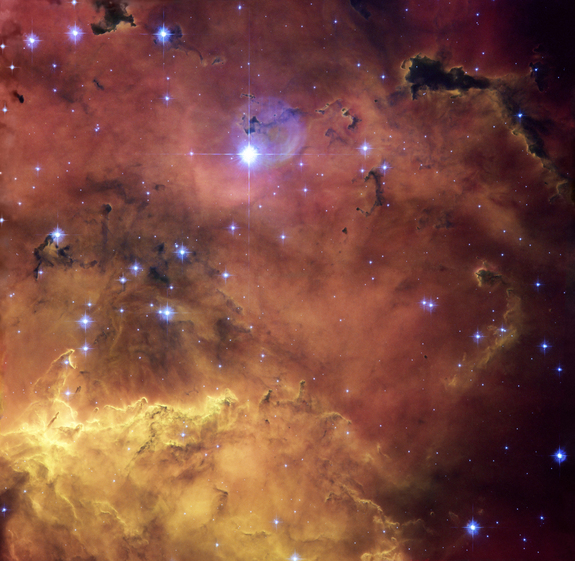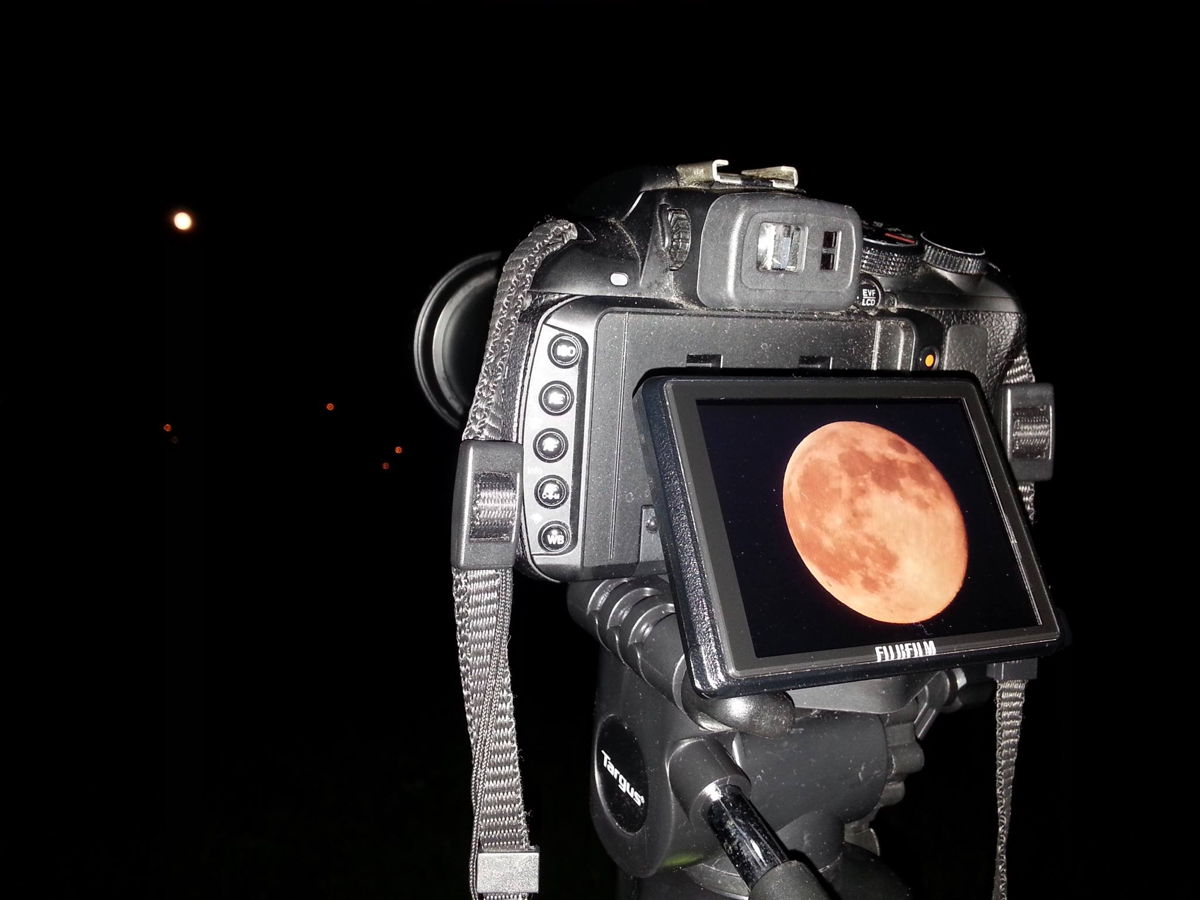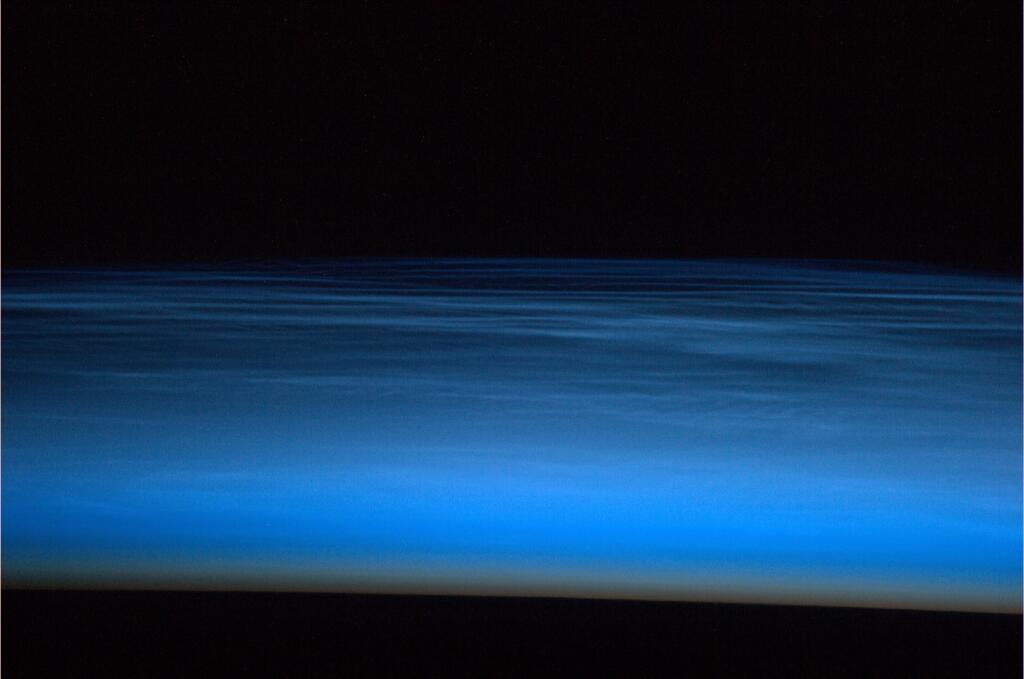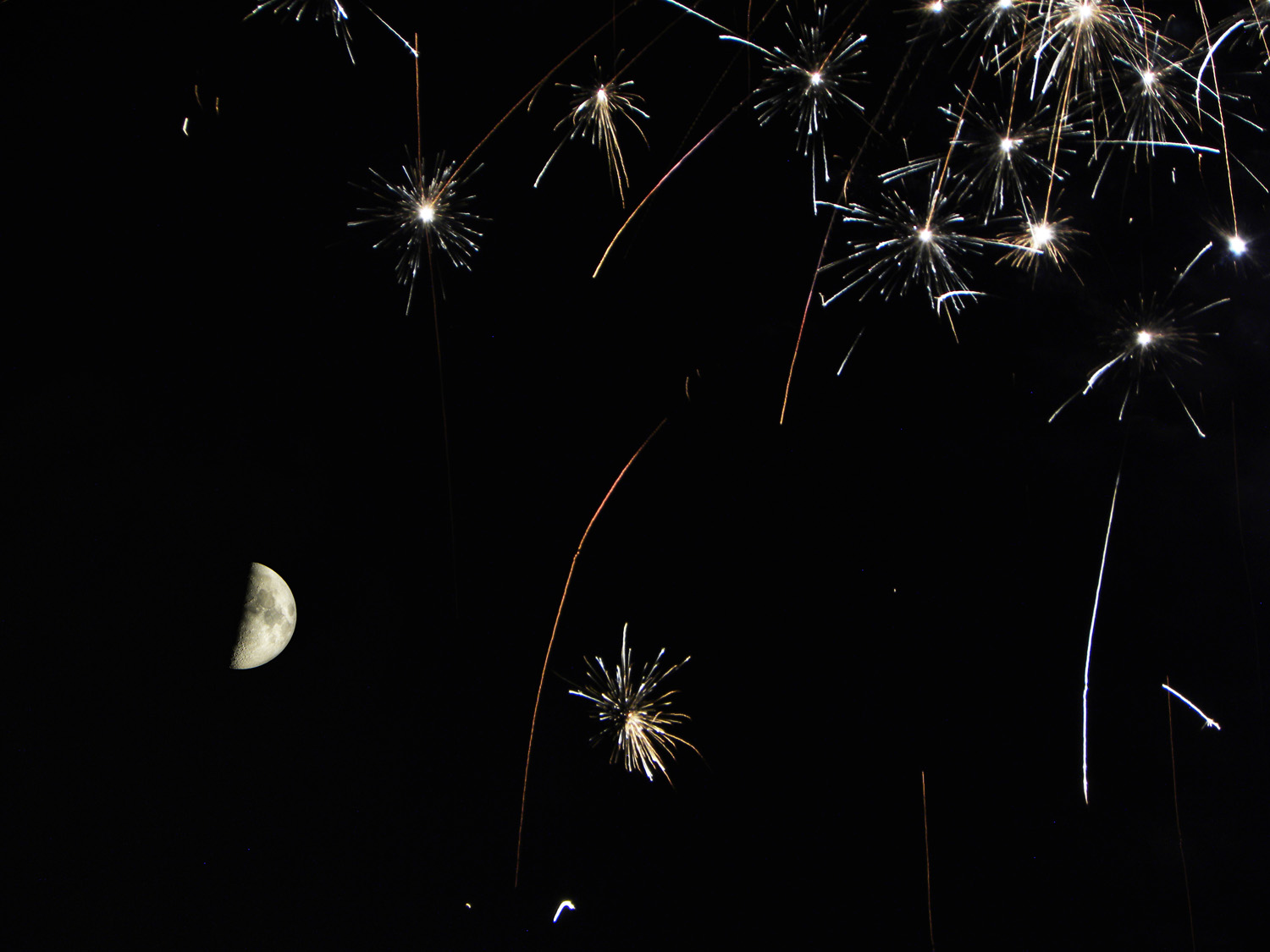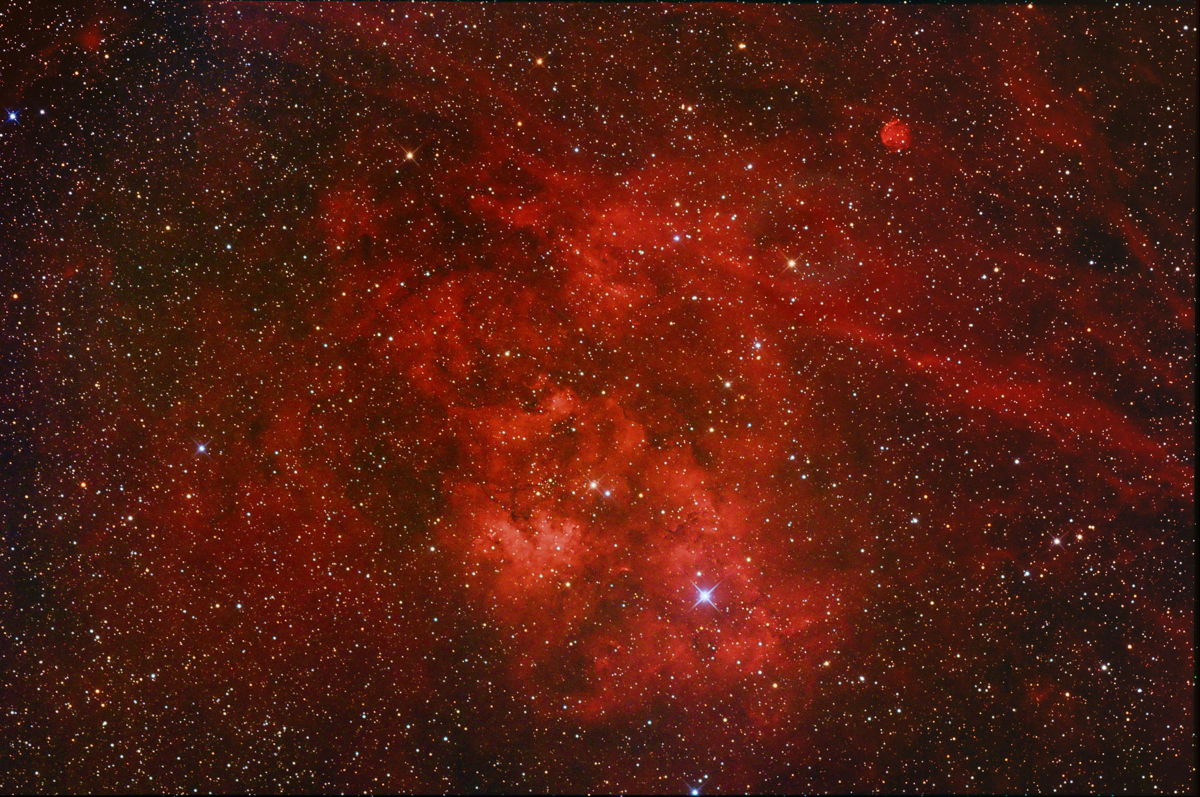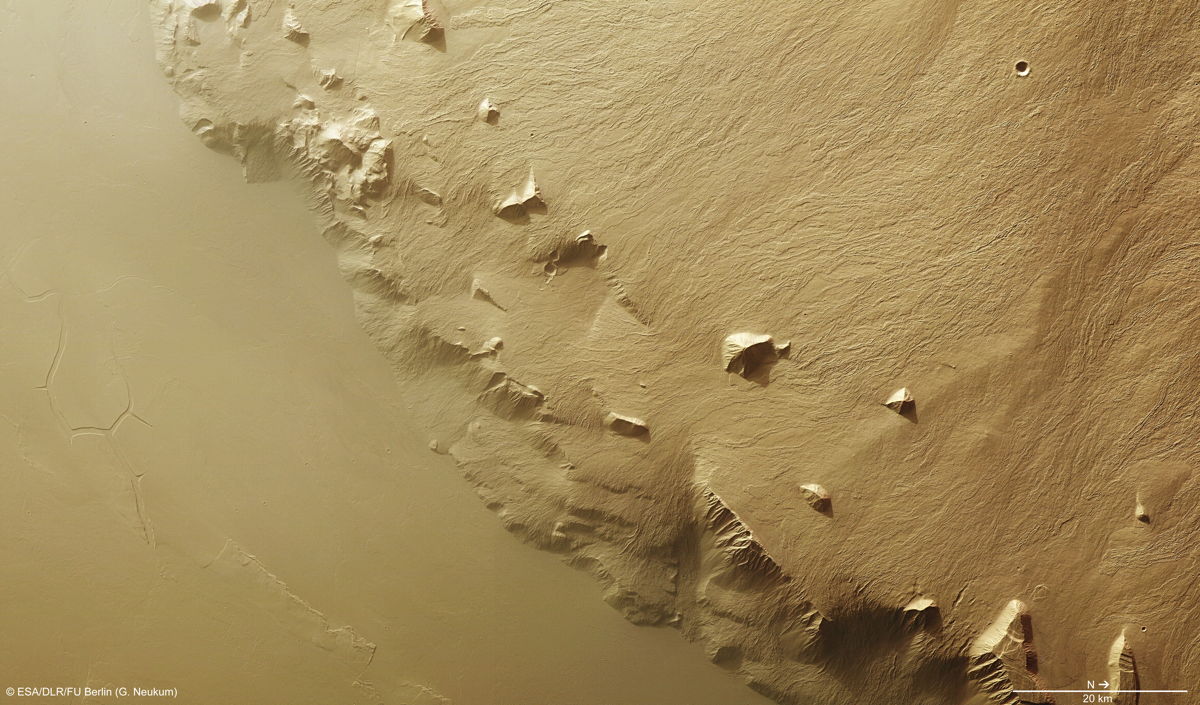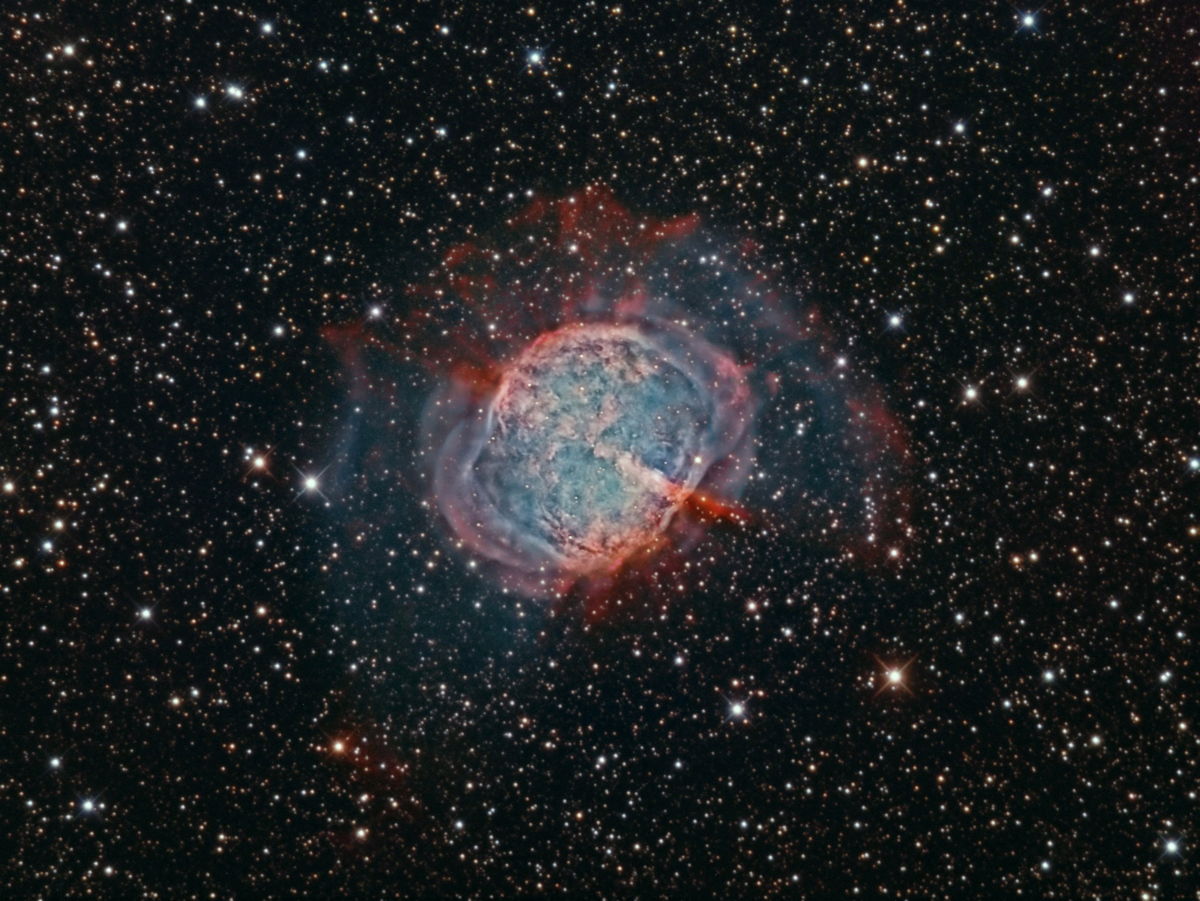Space Image of the Day Gallery (July 2013)
Image of the Day Archives
For older Image of the Day pictures, please visit the Image of the Day archives. Pictured: NGC 2467.
I'll Shoot the Moon Right Out of the Sky for You
Monday, July 1, 2013: Astrophotographer Ryan Lorey sent in a picture of a picture of the supermoon, as seen in a camera viewscreen. The photo was taken from Gloversville in eastern Upstate New York, June 23, 2013.
— Tom Chao
Double Shot
Tuesday, July 2, 2013: Two large coronal mass ejections (CMEs) erupted from the sun into space in less than a day, on June 23-24, 2013, as witnessed by the STEREO (Ahead) spacecraft. The front edge of the first CME showed a bending motion up and to the left. Before that CME drifted out of the field of view, a second CME, more bulbous in shape, headed down and to the right. These CMEs suggest that powerful and frequent solar storms will intensify as the sun likely nears its maximum period of activity.
— Tom Chao
Shine It All Around
Wednesday, July 3, 2013: ESA astronaut Luca Parmitano tweeted this photo of clouds seen from the International Space Station on June 17, 2013. He wrote: "And this is why they’re called noctilucent #Volare pic.twitter.com/qejtxc7Z6o" Noctilucent (or night-shining) clouds form high in the atmosphere, where they reflect sunlight even after the sun has set below the horizon.
— Tom Chao
Fireworks Like a Charm
Thursday, July 4, 2013: Happy Fourth of July from SPACE.com! Astrophotographer Giuseppe Petricca sent in a photo of fireworks launched from the the middle of the river Arno in Pisa, Italy, with the first quarter moon in the sky as well. The photo was taken on June 16, 2013, the patron saint's day in Pisa. [Read the Full Story Here.]
— Tom Chao
Skies Are Turning Red
Friday, July 5, 2013: Astrophotographer Gregg Ruppel of Ellisville, MO, sent in an image of emission nebula Sh2-115 made during the supermoon period of June 20-22, 2013. He writes: “The full moon is the bane of deep sky astrophotographers, so when the moon is full many of us turn to Ha [hydrogen-alpha] or other narrow band filters to record emission nebulae.... This HII area is just two degrees from the bright star Deneb and is designated Sh2-115 in the Sharpless catalog of emission nebulae. The small round nebulosity near the top right is cataloged as Sh2-116 but is actually a planetary nebula (also designated as Abell 71 and PK 85+4.1).”
— Tom Chao
Canadian Stars
Monday, July 8, 2013: Astrophotographer John Chumack sent in a photo of the Milky Way above Rice Lake, Keene, Ontario, Canada, taken before moonrise on a night in June 2013.
— Tom Chao
Breaking space news, the latest updates on rocket launches, skywatching events and more!
Giant Baby Attacks Telescope
Tuesday, July 9, 2013: A trick of perspective makes it seem as though this child is much bigger than this 1.8-meter Auxiliary Telescope, part of the European Southern Observatory's Very Large Telescope in Chile. ESO Astronomer Julien Girard took this photo of his daughter Maëlle during a family day at Paranal Observatory.
— Clara Moskowitz
Beyond the Rim of Sunlight
Wednesday, July 10, 2013: A patch of reflected sunlight gleams off the Earth's oceans in this view from the International Space Station by an Expedition 36 astronaut captured on July 4. A Russian Soyuz spacecraft is seen docked at top, with a large mass of storm clouds over the Atlantic Ocean near Brazil and the Equator far below.
— Tariq Malik
As High as the Highest Volcano
Friday, July 12, 2013: This image captures hundreds of frozen lava flows that once ran down the flanks of Mars' impressive Olympus Mons, the largest volcano in the solar system. The hundreds of narrow, individual lava flows contrast starkly with the smooth lava plains that surround the volcano. Olympus Mons stands about 13.7 miles high (22 km), more than double the height of Mauna Kea, the tallest volcano on Earth.
— Tom Chao
Ghost in the Shell
Monday, July 15, 2013: In 1764, Charles Messier discovered this celestial object, M27, the Dumbbell Nebula, the 27th on Messier’s famous list, and the first planetary nebula to be included. The image shown here represents an international collaboration between Andre van der Hoeven in Holland, Fred Herrmann in Alabama and Terry Hancock in Fremont, Michigan. Almost 40 hours of data collected using different telescopes and CCD cameras combine in the final image. Says Hancock, "Using narrow band filters and very long exposures we were able to capture the outer hydrogen and oxygen shell of M27, which is not normally visible in amateur images."
— Tom Chao
